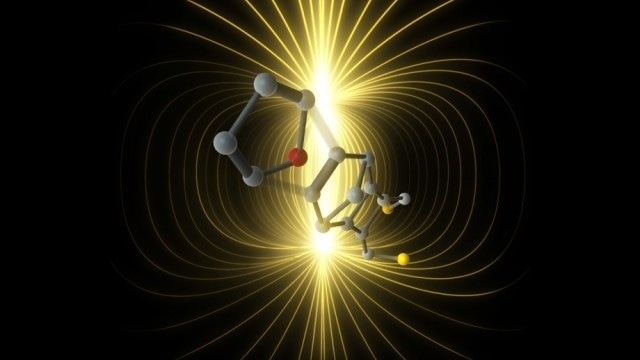Mar 7 2016
For the first time, static electricity has been harnessed by researchers to control chemical reactions. This breakthrough achievement could pave the way for cheaper nanotechnology and cleaner industry. The researchers applied an electric field as a catalyst for the Diels-Alder reaction, a common reaction, and were able optimize its reaction rate by a factor of five.
 Photo Credit: Kate Patterson
Photo Credit: Kate Patterson
Professor Michelle Coote, Lead researcher from the Australian National University (ANU) Research School of Chemistry, stated that the team had reversed traditional thinking with its their discovered control of the Diels-Alder reaction, which is utilized to produce a number of chemicals, spanning from drug cortisone to self-healing materials.
It's the most unexpected result possible. We now have a totally new way of thinking about chemistry. The breakthrough could speed up manufacturing processes and allow unprecedented control of chemical reactions, for example in manufacturing flexible electronic components based on organic circuits.
Professor Michelle Coote, Chief Investigator, ARC Centre of Excellence for Electromaterials Science (ACES)
An electric field catalyst is completely different from traditional catalysts. Traditional catalysts are often based on costly rare chemicals, and they may contaminate the final products or produce unnecessary by-products.
The use of electric fields gives the researchers the option to quickly turn on and off a process from outside the test-tube, providing a remote control over chemical processes.
Professor Coote estimated that electric fields could actively impact the rate of reactions, but they have not been studied before as regular chemical reactions are performed using molecules aligned in different directions in a liquid or gas.
The Centre of Excellence put together a team comprising of researchers from Universitat de Barcelona in Spain and Dr Simone Ciampi from the University of Wollongong to formulate a method to test Professor Coote's estimation, using the electric field produced by the tip of a scanning-tunneling electron microscope. The researchers aligned all the molecules in the same direction by linking them to a surface. Next they examined each molecule using the probe of the electron microscope.
When the polarity and strength of the electric field was modified, the researchers were able to alter the speed of the Diels-Alder reaction; where a conjugated diene and a substituted diene formed a cyclohexene system by a factor of five.
Professor Coote said the outcome would facilitate comprehension of many natural biochemical reactions by researchers everywhere.
Nature uses enzymes as the ultimate catalyst, which can vary reaction rates by 14 orders of magnitude. Enzymes work with carefully oriented charged functional groups, held in precise orientations, effectively generating an oriented electric field within the active site.
Professor Michelle Coote, Chief Investigator, ARC Centre of Excellence for Electromaterials Science (ACES)
Professor Coote began this project when ANU became an ACES partner of the University of Wollongong and was introduced to counterparts at Universitat de Barcelona.
ACES Director Professor Gordon Wallace said it is the only a comprehensive method for interdisciplinary research that can offer proposals to industries in the least amount of time.
The collegial environment and multidisciplinary approach within ACES meant that we could mobilise all the skills necessary-from molecular modelling to exquisite experiments-very quickly to enable this amazing discovery.
Professor Gordan Wallace, Director, ARC Centre of Excellence for Electromaterials Science (ACES)
The research findings have been published in the Nature journal.
Source: http://www.anu.edu.au/